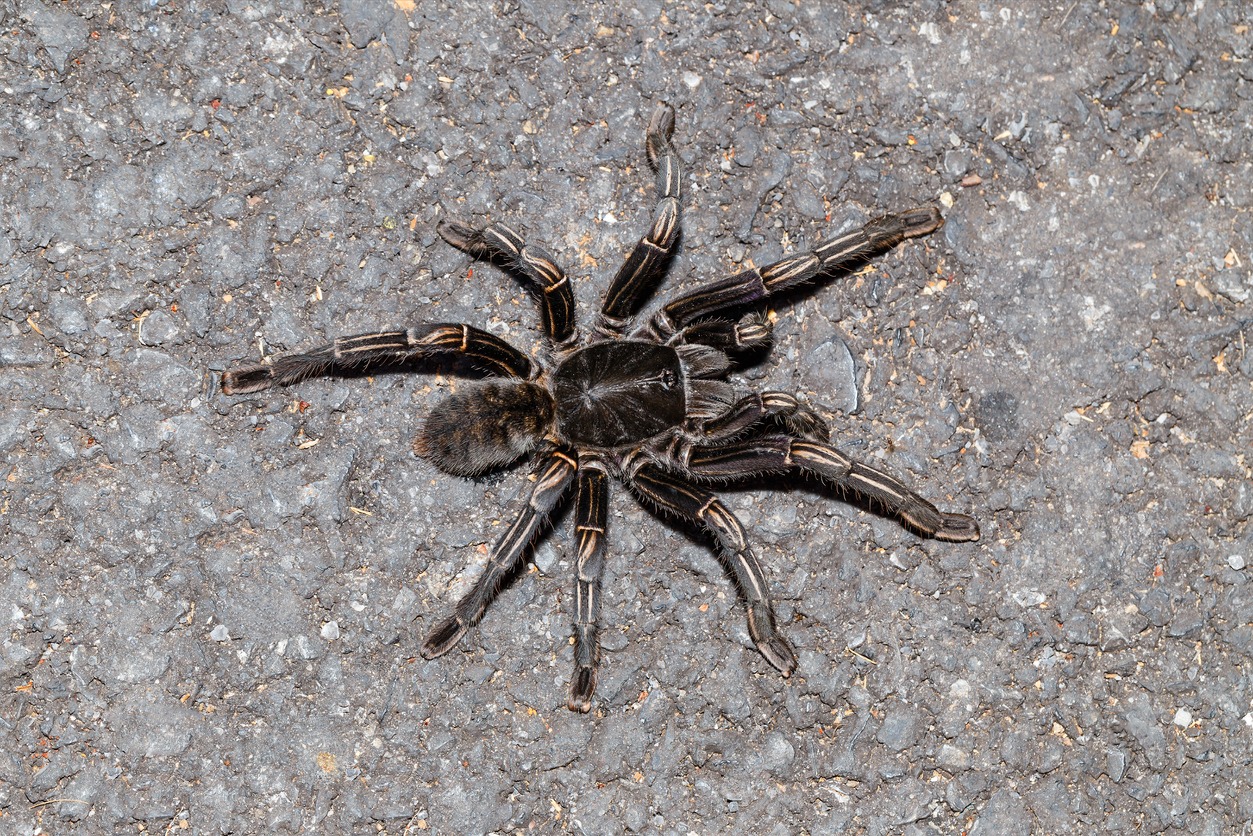The Costa Rican Zebra Tarantula, also referred to as Striped-knee Tarantula and Aphonopelma seemanni, is a tarantula species endemic to western Costa Rica and several parts of Central America like Nicaragua, Guatemala, and Honduras. This species is considered a must-have for many spider hobbyists. Its stripes and contrasts in colors make it a strikingly beautiful spider pet. If you want to learn more facts about the Costa Rican Zebra Tarantula, make sure to read further!
History
Costa Rican Zebra Tarantulas are burrowing arachnids that huddle in large groups in the wild, using the burrows to insulate their bodies from the scorching hot temperatures of the day and the cold temperatures of the night. As a pet, it can be relatively easy to take care of, as it can quickly adapt to various living conditions. However, they may be too skittish for beginner spider hobbyists.
These spiders are terrestrial beings that live in rainforests, which is why humidity is important to them. They can also be found in large groups in semi-arid scrublands.
Characteristics of a Costa Rican Zebra Tarantula
Average life span: Females live up to 15 to 20 years, while males live around 5 years
Average length: 10 to 13 cm including leg span
The Costa Rican Zebra Tarantula comes in dark brown or black color. It has vertical white stripes on its legs, hence its name. Costa Rican Zebra Tarantulas from Costa Rica are usually black with white stripes, whereas those that inhabit Nicaragua have a dark brown body with cream stripes.
These spiders are fast-movers, making them ideal for immediate spider hobbyists. They have a docile demeanor, but when threatened, they can run away at high speed, making it quite challenging for hobbyists to capture and pick them up. However, with daily socialization and gentle handling, the Costa Rican Zebra Tarantula may be moderately tamed. But beware, just like other tarantulas, the Costa Rican Zebra Tarantula throws barb-like hairs when threatened. This may cause skin irritation or allergic reaction. Its venom can be mildly toxic to humans as well.
Caring for a Costa Rican Zebra Tarantula
The enclosure’s width should be three times wider than your spider pet’s leg span, and it should be tall enough for a thick substrate to accommodate the spider’s burrowing habits. A small 5- or 10-gallon enclosure would be ideal—you can find spider terrariums at your local pet store.
When it comes to the substrate, choose something thick that can accommodate their high burrowing behavior. It should be at least four inches thick. An ideal substrate is a mixture of soil, peat moss, and vermiculite. Provide a shelter for your Costa Rican Zebra Tarantula, too—a hollowed-out log, small clay flowerpot, store-bought spider house, or a cork bark can stand as a shelter. Keep in mind that this species loves climbing, too, so provide high-quality decorations such as fake vines and plants to support their climbing habits.
The temperature of the terrarium should be around 70 and 85 degrees Fahrenheit and the humidity level should be around 75% to 80%. Additional heat is not required for the Costa Rican Zebra Tarantula, but a heating pad underneath one side of the spider’s habitat can provide warmth during the night. Placing it on a single side also allows your pet to move to a cooler area should it need a cooler environment. Provide a water dish filled with clean water to provide enough humidity. Providing a shallow, water dish with water prevents the need for misting.
Like other tarantulas, Costa Rican Zebra Tarantulas like feeding on live prey. They like crickets. Some hobbyists raise crickets alongside their pet to ensure that the crickets are well-fed. Some additional food sources include cockroaches, beetles, and grasshoppers. Make sure that these insects are feeding on pesticide-free foliage. Occasionally, you can provide pinky mice to your Costa Rican Zebra Tarantula to increase its protein intake.
You can feed your tarantula at least once a week. Please make certain to remove uneaten food from the enclosure because it can cause stress to the spider. Remove remains because it can promote an unhealthy environment for your pet. Provide clean water and make sure to change the water supply daily. Scoop any substrate that has been soaked with spills to prevent bacterial growth.

